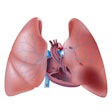Tuesday, December 1 | 8:30 a.m.-8:55 a.m. | RC305-01 | Room N230
How are today's neuroradiologists handling stroke triage? Perfusion CT and perfusion-weighted MRI can assess for ischemic stroke, hemorrhage, vasospasm, brain tumors, seizures, and traumatic brain injury. But not everything is appropriate for every case, according to Dr. Max Wintermark from Stanford University."Not all perfusion imaging methods are equivalent, and some basic understanding of the principles underlying perfusion image processing is required to understand whether perfusion results are qualitative and quantitative," Wintermark told AuntMinnie.com. "While automated processing is on the rise, one needs to know a few pearls and pitfalls related to perfusion image processing to detect when automated processing fails."
Advanced neuroimaging techniques, including CT and MR angiography and CT and MR perfusion, serve to inform acute stroke treatment decisions and are increasingly used in the acute setting, he added. The course will review the most common neuroimaging modalities and treatment algorithms used in the evaluation of acute stroke patients, Wintermark said.



















